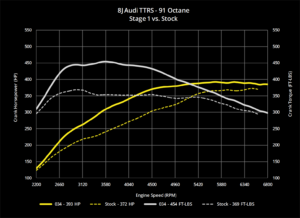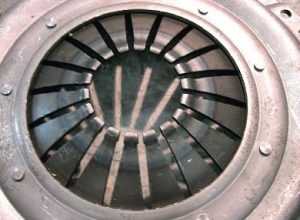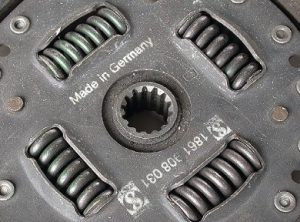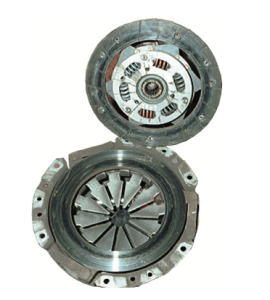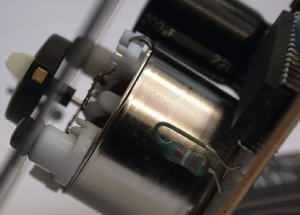The cylinder head is an essential component of any internal combustion engine. It sits on top of the engine block and houses the combustion chambers, valves, and other important components. The cylinder head is also responsible for controlling the flow of coolant through the engine. In this blog post, we will focus specifically on the coolant passages in the cylinder head and their importance in maintaining engine temperature and preventing overheating.
Coolant passages are a series of channels or cavities that allow coolant to circulate through the engine. These passages are typically located in the cylinder head, engine block, and sometimes in other engine components such as the intake manifold or exhaust manifold. In the cylinder head, coolant passages are specifically designed to help regulate the temperature of the engine by circulating coolant around the combustion chambers and valve seats.
The coolant passages in the cylinder head are typically made up of small channels and passages that are machined into the metal. The size, shape, and location of these passages can vary depending on the specific engine design. For example, some engines may have passages that are larger or more complex than others, depending on the size and configuration of the combustion chambers.
The primary purpose of the coolant passages in the cylinder head is to transfer heat away from the combustion chambers and other hot spots in the engine. When the engine is running, the combustion process generates a lot of heat, which can cause the metal to expand and warp if not properly cooled. The coolant passages help to regulate the temperature of the engine by circulating coolant through the passages and carrying away the excess heat.
In addition to regulating engine temperature, the coolant passages in the cylinder head also help to prevent overheating. Overheating can occur when the engine is running too hot for an extended period of time, causing damage to engine components such as the cylinder head gasket, valves, and pistons. The coolant passages help to prevent overheating by maintaining a consistent and optimal operating temperature for the engine.
If the coolant passages in the cylinder head become clogged or damaged, it can lead to engine overheating and other serious problems. Clogs can occur due to a buildup of mineral deposits or other debris, which can prevent the coolant from flowing through the passages. Damage can also occur due to corrosion or physical damage to the cylinder head.
To prevent issues with the coolant passages in the cylinder head, it’s important to maintain proper engine coolant levels and perform regular maintenance on the engine. This may include flushing the coolant system, replacing damaged or worn components, and checking for signs of leaks or damage.
In conclusion, the coolant passages in the cylinder head play an important role in regulating engine temperature and preventing overheating. These passages are designed to circulate coolant around the combustion chambers and other hot spots in the engine, carrying away excess heat and maintaining a consistent operating temperature. Proper maintenance and care of the coolant passages can help to prevent engine damage and prolong the life of the engine.
As mentioned in the previous section, the primary purpose of coolant passages in the cylinder head is to transfer heat away from the combustion chambers and other hot spots in the engine. This is accomplished through a process called convective heat transfer, which relies on the flow of coolant through the passages to carry heat away from the engine.
When the engine is running, coolant is circulated through the engine block and up into the cylinder head. The coolant enters the cylinder head through a port on one end and flows through the passages, carrying away heat as it goes. The coolant then exits the cylinder head through another port on the opposite end and returns to the radiator to be cooled down before being recirculated back through the engine.
The size, shape, and location of the coolant passages can have a significant impact on how effectively heat is transferred away from the engine. For example, larger passages can allow for greater coolant flow, which can help to dissipate heat more quickly. However, larger passages can also result in a loss of pressure, which can impact the effectiveness of the coolant system as a whole.
Another factor that can impact the effectiveness of coolant passages in the cylinder head is the material that the passages are made from. Different materials have different thermal conductivity properties, which can impact how effectively they transfer heat away from the engine. For example, aluminum is a common material used in cylinder heads due to its high thermal conductivity, which allows it to transfer heat away from the engine more efficiently.
In addition to these factors, there are several other things that can impact the effectiveness of coolant passages in the cylinder head. For example, if the engine is running at a high temperature for an extended period of time, it can cause mineral deposits to build up inside the passages. This can restrict coolant flow and reduce the effectiveness of the cooling system.
Leaks in the coolant system can also impact the effectiveness of the passages, as coolant may not be able to circulate properly through the engine. In some cases, leaks can also result in air getting into the cooling system, which can cause hot spots to form in the engine and lead to overheating.
Overall, the coolant passages in the cylinder head play a critical role in regulating engine temperature and preventing overheating. To ensure that these passages are functioning properly, it’s important to maintain proper engine coolant levels, perform regular maintenance on the engine, and address any issues with the cooling system promptly. By doing so, you can help to prolong the life of your engine and avoid costly repairs down the road.
Advantages of Cylinder Head Coolant Passages:
- Improved Engine Performance: The primary advantage of having coolant passages in the cylinder head is that they help to regulate the temperature of the engine. By carrying away excess heat generated during the combustion process, the coolant passages help to prevent the engine from overheating, which can cause damage to engine components and reduce overall performance.
- Increased Engine Longevity: Overheating is one of the most common causes of engine failure. By regulating engine temperature and preventing overheating, coolant passages in the cylinder head can help to prolong the life of the engine and reduce the likelihood of costly repairs.
- Better Fuel Efficiency: When an engine is running at the optimal temperature, it is able to burn fuel more efficiently, resulting in better fuel economy. By helping to maintain a consistent and optimal operating temperature, coolant passages in the cylinder head can contribute to better fuel efficiency.
Disadvantages of Cylinder Head Coolant Passages:
- Risk of Clogs: Over time, mineral deposits and other debris can build up in the coolant passages, which can restrict coolant flow and reduce the effectiveness of the cooling system. This can lead to engine overheating and other serious problems.
- Corrosion and Physical Damage: Coolant passages in the cylinder head can also be damaged due to corrosion or physical damage to the cylinder head. This can lead to leaks and other issues that can impact engine performance and longevity.
- Design Complexity: The design and construction of coolant passages in the cylinder head can be complex, requiring precise machining and materials selection. This can increase the cost and complexity of engine manufacturing and repair.
- Risk of Leaks: Coolant passages in the cylinder head are susceptible to leaks, which can cause the engine to lose coolant and overheat. Leaks can be caused by a variety of factors, including corrosion, physical damage, and faulty gaskets or seals.
In summary, while coolant passages in the cylinder head provide numerous benefits, they also come with certain disadvantages. To ensure that coolant passages function properly and avoid potential issues, it’s important to maintain proper engine coolant levels, perform regular maintenance on the engine, and address any issues with the cooling system promptly.


